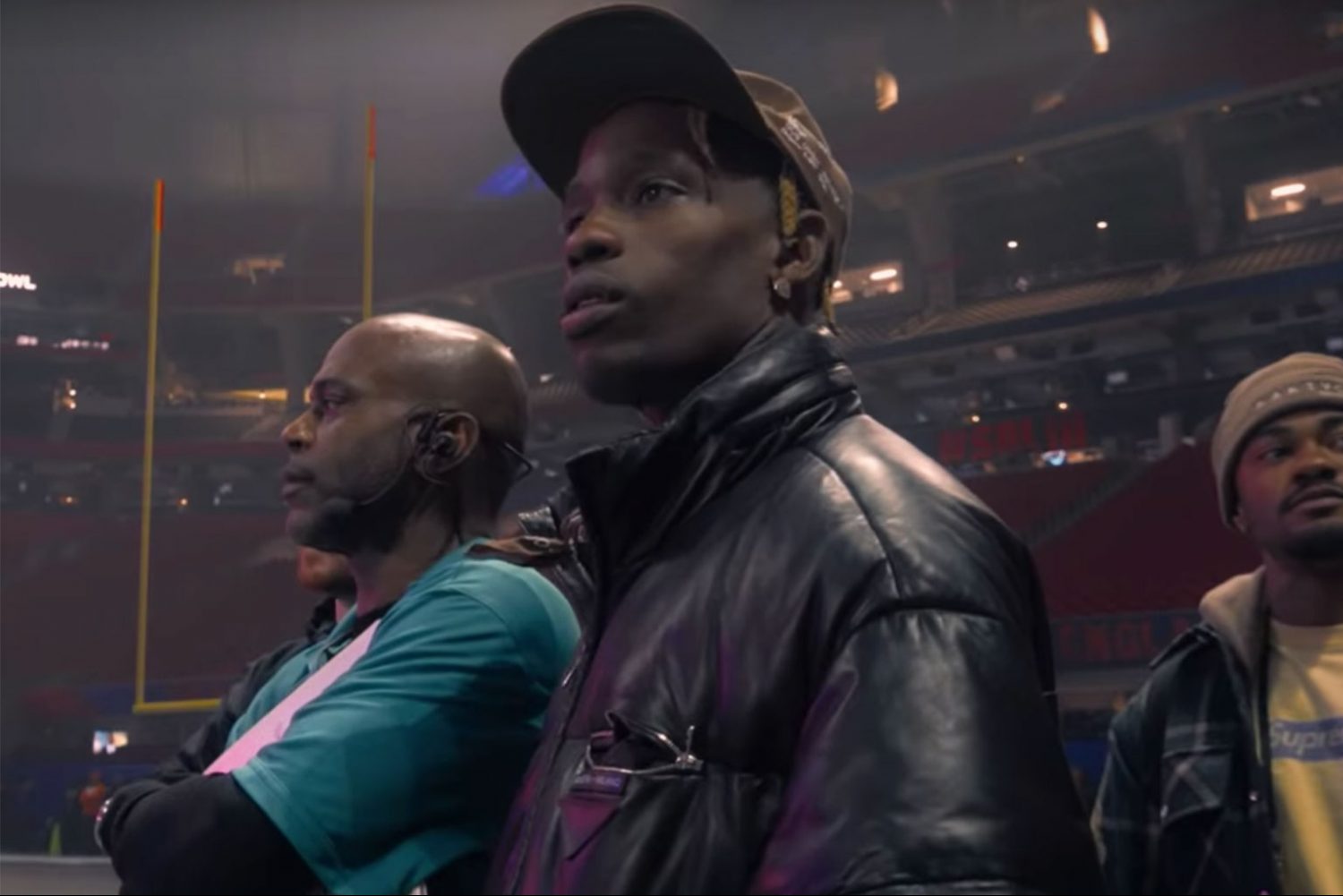Rapper Travis Scott has stepped outside the bounds of his career to give his fans a cinematic look into his life and music. Netflix recently released his documentary, “Look Mom I Can Fly,” with promises of unveiling the mega celebrity’s world. The film, directed by White Trash Tyler, is interesting and entertaining enough, but it falls short of the poignant tale of passion and perseverance it’s trying to tell.
Rather than following a narrative or chronological structure, “Look Mom I Can Fly” weaves together mostly random clips of concert footage and personal recordings of Scott’s shenanigans. There are several separate segments of the documentary, each preceded by a title card denoting the approximate date and location. However, there’s no apparent rhyme or reason for the order of segments. The film relentlessly jumps from one event in Scott’s life to the next without regard for viewers’ understanding of what is going on.
The film opens with an intriguing interview with Scott on a moving rollercoaster. He answers questions about his album “ASTROWORLD” in a cool, collected manner as they whiz through the air, and eventually a neat animation drags us into the chaotic world of Travis Scott concerts. Thousands of people are screaming and going hard, proclaiming their adoration for the man’s music and shows. Other people are diving into the crowds, and still others rage like wild animals with a primal urge to party.
The opening sequence leads viewers to assume the documentary will focus on the conception and production of “ASTROWORLD,” but the sudden switch to generic footage of mosh pits is a telling sign that we’re in for something else. Much of “Look Mom I Can Fly” can be summed up as the oscillation between concrete glimpses into Scott’s world and uninspired compilations of debauchery at his concerts.
The film also suffers from its lack of narration. There’s no auditory or textual explanation of what’s happening onscreen, why it’s important or how it relates to a deeper theme. At least Scott succeeded in making viewers feel like they’re on a rollercoaster a la his muse, the extinct Houston theme park, Astroworld. The documentary aimlessly slings us across time and space at breakneck pace through a void containing parcels of his past and present.
Suddenly, we arrive at Scott’s grandmother’s house, in which he spent much of his young childhood. He takes us on a silent tour through the home until he shows off his old bedroom. His childlike reminiscence evokes a hint of genuine nostalgia, but there’s no depth to it. Apart from a few, random home videos, there’s no story of his early years. There’s no introduction of his grandmother other than a small title card over footage of Scott and her chatting. There’s no interview with her, leaving their story oddly unfinished.
The juxtaposition of Scott’s supercar pulling out the driveway of her humble house could be effective visual storytelling, but the lack of supporting evidence and context of his grandmother’s personality makes you wonder: “Why hasn’t he bought her a nicer home?” Of course, we can infer she would refuse a gift like this, but it’s impossible to say for sure when all we hear from her are brief remarks in a trivial conversation.
“Look Mom I Can Fly” makes a habit of providing superficial information on many facets of Scott’s life and pretending the tidbits are meaningful insight. For further example, it chooses to include his arrest for inciting a riot at his concert but fails to deliver the lesson learned or even what happened afterward.
We learn that when fans were injured in his mosh pit, police detained Scott for inciting a riot. But apart from a call from his lawyer saying he’s protected under the First Amendment, we hear nothing more about the event. Were the charges dropped? Did he have to go to court? Did the arrest affect Scott in any long-term capacity? “Look Mom I Can Fly” decides not to tell us.
Abruptly, the documentary introduces Kylie Jenner and Stormi, still a fetus on an ultrasound. You might think it’s going to dive into his journey into fatherhood, but you’d be sorely mistaken. The film instead readdresses the concept of Astroworld with home video of a young Scott at the now-defunct amusement park.
It does so only for a moment before flashing back to 2013, with a clip of his producer expressing his faith in Scott’s talent. So now you might think we’re transitioning back to his development of “ASTROWORLD.” Again, you’d be wrong. We arrive in “Africa,” as denoted by the title card, at an undisclosed date. Why? Because “Look Mom I Can Fly” says so. The documentary creates its own rules: It doesn’t need a fluid narrative, and it doesn’t have to expand upon any of the topics it weaves into itself.
Finally, we reach the making of “ASTROWORLD.” But it’s just a montage of Scott’s squad developing the album. And then releasing the album. And then promoting the album. And then performing the album. It’s a mechanic, unfeeling recounting of something that requires so much emotion and humanity. It’s generic, and it’s boring. The rest of the documentary plays like a reading of the Travis Scott wiki, only with less detail.
While mostly disappointing, “Look Mom I Can Fly” does have its shining moments. There are a few scenes that truly intimately portray Scott’s everyday life in a novel way. For instance, after the release of “ASTROWORLD,” we see hordes of fans hovering outside a building, waiting for Scott and Jenner to make an appearance. People are piled on top of one another, scrambling for the best view, and a cop is yelling instructions at the rowdy crowd. Then, jarringly, we’re inside that building, watching Scott and Jenner peacefully eat their meal in comfortable silence.
Little directorial moves like this are simple yet powerful at communicating themes, like the contrast between the bustle of public life and the quiet normalcy of private life. Likewise, the comparison of home videos of young Scott with those of his daughter also provides insight into class mobility and generational differences. And the inclusion of Scott’s loss at the Grammys emphasizes the falsity of “failure” if you refuse to give up. If only White Trash Tyler was consistent with the quality of his visual storytelling.
These scenes and a few similar other ones may be more than mediocre, but they’re also few and far between. Most of the documentary feels lazily scrapped together. It’s like someone (ahem, Tyler) collected every existing video featuring Scott and created a barebones outline of his life with it, tying the flashiest and most significant clips together with a pretty but loose bow. There’s no overarching theme, no deeper message, and seemingly no point to the documentary.
“Look Mom I Can Fly” could have been better. With the inclusion of interviews and a more focused storyline, the film could have successfully delivered an intimate journey into the world of Travis Scott. Unfortunately, we got a superficial highlights reel instead.
















